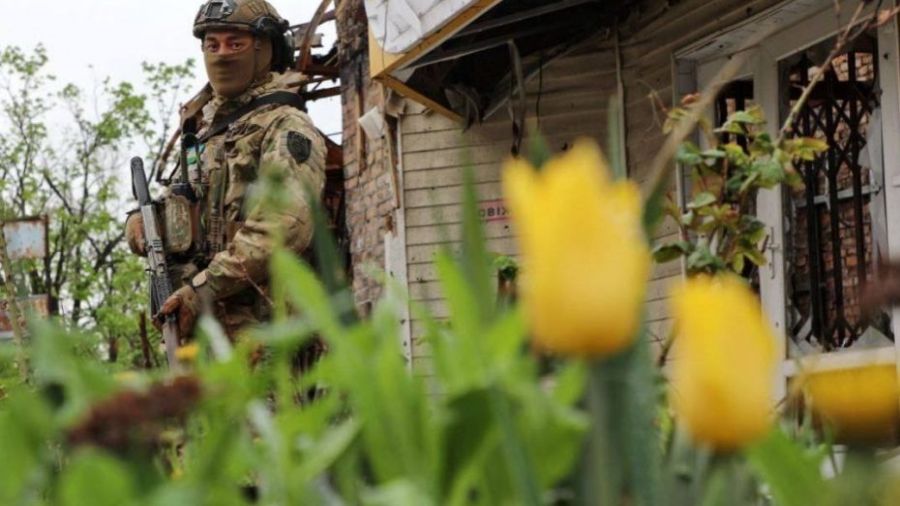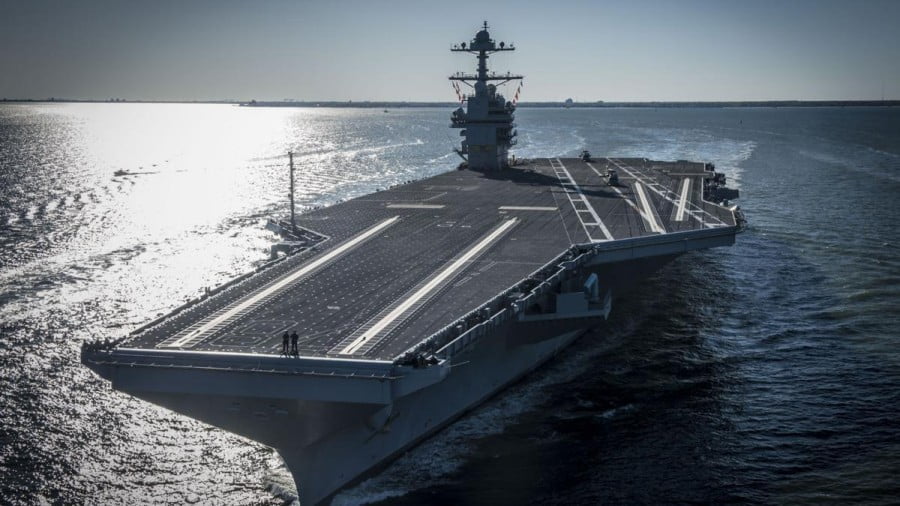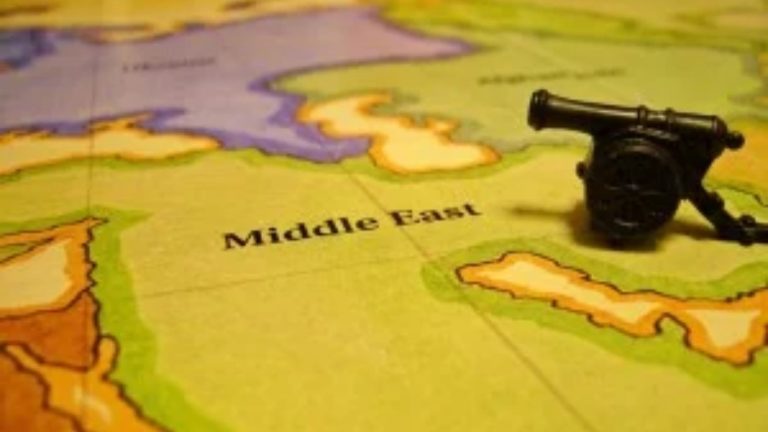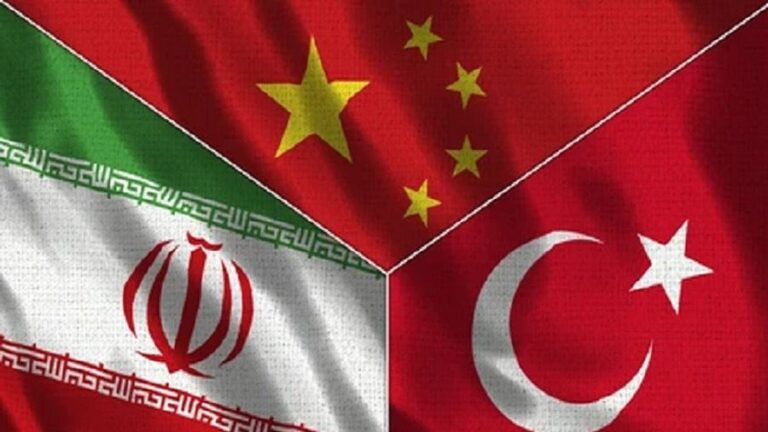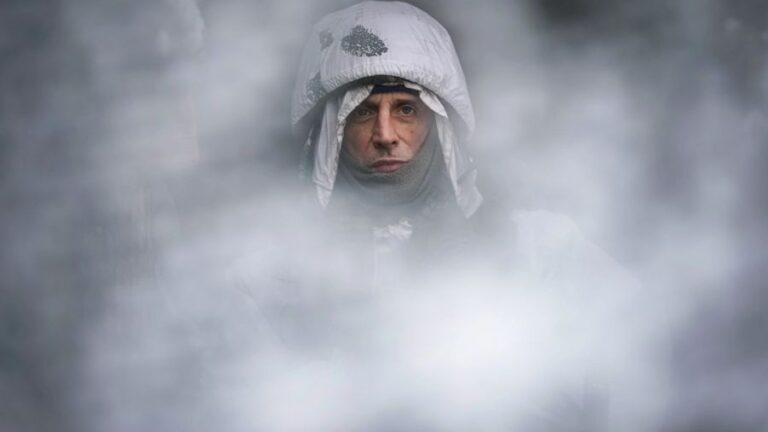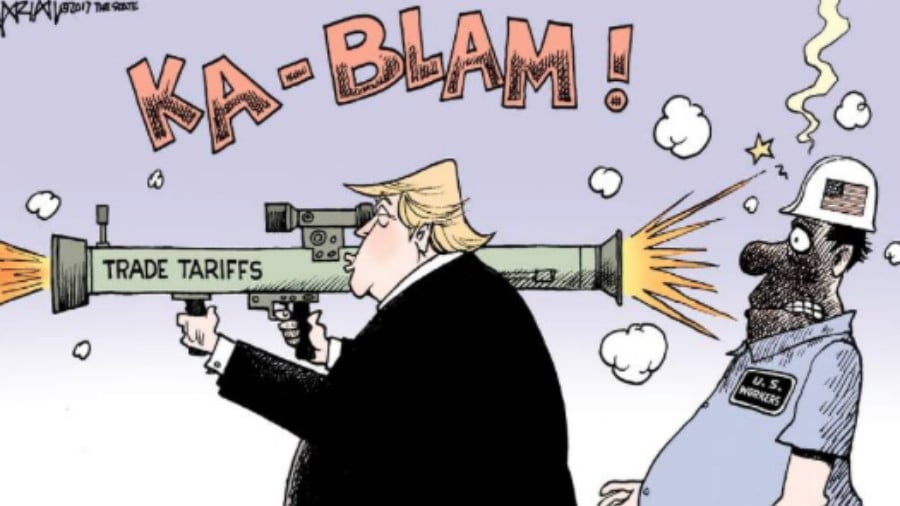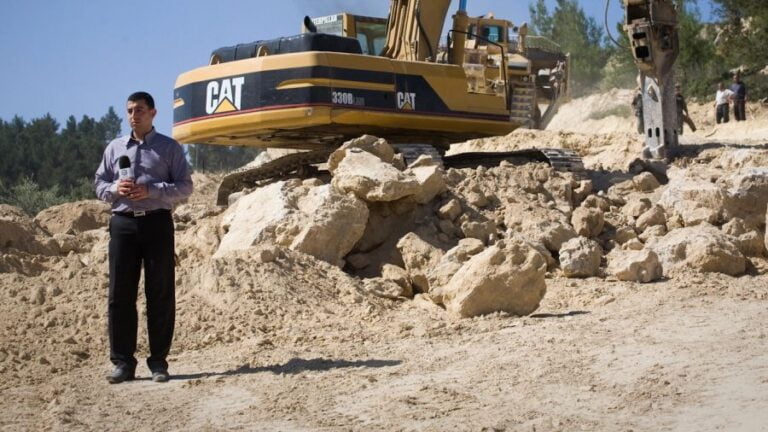The End of the Battle of Bakhmut?
The Battle of Bakhmut represents the most hard-fought battle and abhorrent bloodbath the world has not seen in the last 80 years.
Up until only a year ago, Bakhmut was just an ordinary ex-Soviet Ukrainian provincial town, which lived its idle parochial life in anonymity. What the mood of its residents was like in the eve of the Maidan Coup could clearly be seen in the fact that even 94 % of its citizens voted for Viktor Yanukovych. A massive citizens’ protest against the Euromaidan Coup aftermath, at the then Artyomovsk, the Bakhmut of today, happened on the 1st of March 2014.
Let me stray away a little into a historical detour here so as to avoid the confusion with the names of the battles. The Battle of Artyomovsk was a battle which happened in the city of Artyomovsk in 2014 (historically and since 2016 known as Bakhmut) during the war in Donbas in eastern Ukraine. Armed confrontation occurred between the National Guard of Ukraine and the Special Operations Forces of Ukraine against pro-Russian militias fighting for the Donetsk People’s Republic. At about the same time, the most brutal massacre in Odessa occurred on the 2th May 2014.
The Russian embassy in the U.S. stated in memory of the tragic day that “May 2 marks the nine-year anniversary since the date of the tragic events in Odessa. “On this day in 2014, a brutal crowd of Ukrainian fanatics committed a merciless murder of several dozen civilians. Like Nazi castigators, these extremists drove defenseless people, among them – women and elderly, into the House of Trade Unions with sticks and steel bars, and then set it on fire with Molotov cocktails. At least 48 people were burned to death, poisoned by carbon monoxide or died after jumping out of windows. Hundreds were seriously injured. Their only ‘fault’ was their disagreement with the aggressive policies of the neo-Nazis who came to power and their desire to remain Russian,” the statement said. The U.S. decided ‘not to notice’ that Kiev hid the truth about the Odessa massacre’.
The words of Eva Karene Bartlett, a Canadian war reporter from Donbass about the Odessa Massacre on 2 May 2014, ring sadly true:
“It’s now clear that many of the anti-junta activists who occupied the Trade Unions House were neither burned to death nor died of smoke inhalation, but were savagely shot at point-blank range by agents and thugs who had infiltrated the building to kill as many of the occupants as possible, burn the corpses, and then slip away without notice. Some of the victims–like a young woman who was eight months pregnant –were strangled with an electrical cord and left slumped backwards over her desk in a room that shows no sign of fire or smoke damage. In another case, a woman was stripped naked from the waste down, raped, killed, and set ablaze”
Igor Damjanovic, a Montegrean/Serbian war correspondent from IN4S.net from Donbass, recalls the past details in his live reports: “At the end of the month of June, the rebels attacked the military warehouse in Artyomovsk, where according to some estimates, there were 500 tanks parked there and other units of armored combat equipment. The rebels did not succeed in occupying the warehouse, but they managed to capture a number of tanks from the Artyomovsk warehouse, several combat tanks and some military equipment and exactly that was going to later create the main ‘pillar’ of the future military forces of the Donetsk National Republic. In the later process of the de-Sovietization and the annihilation of anti-Nazi legacy in Ukraine, the pre- revolution name of the city was reinstituted, which is Bakhmut.”
If we go back in history, Fiodor Sergeyev or Comrade Artyom was a renowned revolutionary, a close associate and a friend of the future leader Joseph Stalin and Marshal Clement Voroshilov. Comrade Artyom died in 1921 and was buried in Mass Grave No. 12 of the Kremlin Wall Necropolis in Red Square, Moscow. Three years later, Bahkmut got his name. His newborn son, Artyom Sergeyevich, was officially adopted by Stalin. Artyom, the same as two biological sons of the Soviet leader, Joseph Stalin, actively participated in the WWII. Artyom was captured and then escaped from German captivity and after the war he even advanced to the rank of a general. Stalin’s younger son Vasiliy, a war hero as well, used to be a pilot in the WWII. The central street in Donetsk, which stretches for more than 10 kms still bears the name of Comrade Artyom.
Fast forward to 2023: “The situation is more or less the same in other cities in Donbass, which is not controlled by the Kiev regime,” Igor reports. Up until the month of May when the first heavier artillery bombing occurred, the situation in Bakhmut was relatively peaceful. Some time in August on all the roads towards the city, Russian troops started advancing, the bulk of which was represented back then by the soldiers of the private Wagner military group. Igor reports that the direct battle for the city began sometime in the middle of November 2022 and at the beginning of this year 2023 the Wagner forces began to get reinforcement by the members of the regular Russian Army, which defend the flanks for the Wagner troops and they also provide artillery support.
“The Battle of Bakhmut represents the most hard-fought battle and abhorrent bloodbath the world has not seen in the last 80 years. The forces which both warring sides engaged in this military zone outnumber the pre-war population of the city. Thus, considering the number of the forces engaged and their technical capabilities and professional competence on one hand and the significance the top political leaders in Kiev headed by Volodymir Zelensky give to it in the public on the other hand, we can say with determination that the Battle of Bakhmut considerably surpasses the limits of yet another ordinary, provincial city,” Igor Damjanovic reveals to his viewers.
Only when the Battle of Bakhmut is definitely over, we shall be able to make a more relevant estimate of the number of the casualties both the dead and the injured, on both sides in the conflict. However, if we take into account that about one hundred and fifty days ago, the Western media reported their rough estimates that Ukraine is losing a three-digit number on a daily basis. The number of the dead Ukrainians in this gory and fierce battle could easily reach and even surpass the number of 20 000. Relevant and credible sources Igor Damjanovic has had a chance to consult estimate the Russian losses in the Battle of Bakhmut at 2 to 3 times less than the Ukrainian losses. Given that it is an offensive operation, according to the statistics it can be considered a great success, outlines Igor.
A major problem for Ukrainians is that for the Battle of Bakhmut apart from seven independent brigades of the regular army and the regular territorial defense, they sent their top specialists’ units in SBU ALFA, an elite Ukrainian Spetsnaz group, the border military, the rest of the former neo-Nazi Azov battalion and the mercenaries from the so-called Foreign Legion. Many high-ranking officers from the elite units and veterans from the conflicts in Donbass in 2014 and 2015, who had a status of undisputed heroes in Ukraine have remained in the mud of Bakhmut for good.
“The risks of war present no danger to those who are well prepared for it in advance and who are mindful of their place in the nation’s defenses. Confusion and panic usually appear wherever there is no adequate organization or appropriate leadership at a time of grim trials” (Marshal Georgy Zhukov).
The Battle of Bakhmut has taken away the top military units and organized brigades in the Ukrainian army from Zaporozhye and Kherson direction and it undoubtedly reduced the Ukrainian army capacities for the long announced counteroffensive and in all probability the counteroffensive appears to have been postponed. Depending on the further developments in the future, the Battle for Bakhmut might be remembered as the most crucial battle between Russia and Ukraine.
If we go back in history in order to possibly establish some historic, political and military parallels, it might be worth mentioning that Hitler’s occupation and the attack on the Kingdom of Yugoslavia moved Operation Barbarossa forward for a few weeks and de facto foiled the grand plans by Wehrmacht to siege Moscow before winter in possibly the same way as this Battle of Bakhmut now has done in the grand scale of the ongoing Russian Special Operation in Ukraine. Lest we forget, Operation Barbarossa, original name Operation Fritz, during World War II was a code name for the German invasion of the Soviet Union, which began on June 22, 1941. The German troops failed to defeat the Soviet forces in the campaign signaled a crucial turning point in the war.
The battle of Bakhmut may as well undermine the morale among the Ukrainian soldiers, which has so far proven not to be sagging at all which represents an important factor in preserving the stronghold of Bakhmut, besides the support in arms and military equipment from the Political West. From the Kharkov Region there is some information that certain military forces units refuse to go to Chasov Yar, which is where the Wagner group might wreak havoc to their troops. The Chasov Yar represents the key point for further progress to Konstantinovka, Slavyansk and Kramatorsk.
The battle of Bakhmut is practically over – predicts Igor Damnjanovic, a Serbian war correspondent who is based 50 kms away from it. The Wagner forces are in control of the center and the most important strategic facilities and the rest of the Ukrainian units in the Western part are in operational or even factual encirclement. Let me explain what it means: military encirclement means that the evacuation and supply routes are under constant artillery fire of their opponents. There is a question emerging: what will the Russians gain from a successful victory in the Battle of Bakhmut apart from the postponement of the Ukrainian counteroffensive, the destruction of the best units of the Ukrainian army and provision of conditions for future advancement towards Slavyansk and Kramatorsk.
The end of the Battle of Bakhmut will bring yet another positive element for the Russian army thanks to the establishment of complete coordination between their private military Wagner group and the Ministry of Defence of the Russian Federation. It seems that after a number of misunderstandings from earlier on, a compromise has been established between Wagner’s disregard for the norms by the Ministry of Defence as regards the use and deployment of the ammunition and missiles on one hand and a standardized system of decision making in the Ministry of Defence. Wagner Group appears to have accepted the authority of the Russian Ministry of Defence to some necessary extent on one hand and the Russian Ministry of Defence has accepted the Wagner Group just the way it is
On a related note, Miodrag Zarkovic, a Serbian war correspondent with Helmcast Channel, reports directly from Donbass as well that the Ukrainian counteroffensive is still not happening even though it kept being announced for quite a while; yet it seems to be scheduled for 15 May. Zarkovic reveals that 2 May was “in the cards’” for the Kiev regime too. He goes on to say that even if the Ukrainian counteroffensive does get to be orchestrated somehow at some point, it will not be an easy feat for the Kiev troops. It will certainly not go according to their plan and surely not the way it is being announced by the Western mainstream media – Zarkovic elaborates in his report. And then the Kiev “brave heroes of war” announced their counteroffensive for 2 May and then they had to cancel because “heavy rains” were announced’ in the weather forecasts. “Not a drop of rain fell on 2 May,” – confirms Miodrag Zarkovic, after all, modern military equipment does not heavily depend on the weather circumstances.
One would not postpone anything crucial such as the great counteroffensive for months, which the result of this war would crucially depend on. Yevgeny Prigozhin stood out to say that it would most probably happen on the 15th. Miodrag Zarkovic is positive that it is a military tactic by the Russians to entrap the Ukrainian troops any time soon. He draws his conclusions based on the “colourfully dramatic” ways Prigozhin seems to be applying in his addresses to the public in one way or another. All in all, the Ukrainians keep putting off this counteroffensive that it is possible that not even the Ukrainian highest ranks are not quite certain of their plans any more. Even the Western mainstream media report (if we put the notoriously heavy rains aside) that the Russian troops have managed to strike and obliterate the immeasurably huge amounts of Ukrainian weaponry, which had previously been sent by the West. Miodrag tends to think that there is not going to be a counteroffensive or at least that the Ukrainians will feign a counteroffensive (my note to readers: in the same way as Hamlet feigns madness) yet there will not be a real one. Zarkovic confirms that after visiting Energodar, Crimea and a few other cities in the past week that the Russian lines of defense are seriously jaw-dropping, “heavyweight” defense lines even in Crimea. He dares say without fear of contradiction that these are the strongest and most powerful defense lines on Earth that not one single army in the world can penetrate at this point in time.

